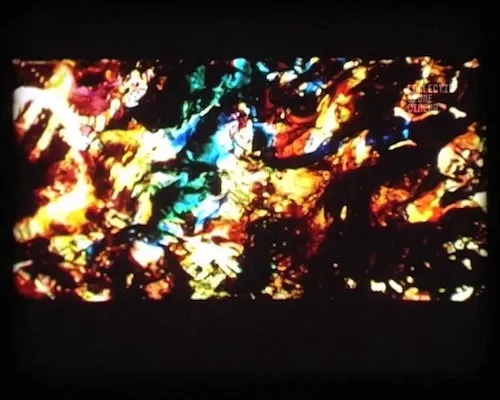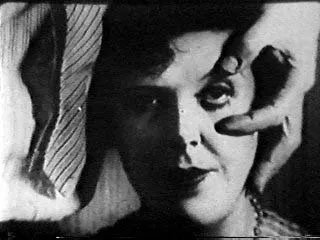It's my first week on the job as associate creative director of Red Hat Films, and I'm already suffering from some serious déjà vu.
While I don't expect to see my face in some old company photo like Jack Nicholson in The Shining, there is something eerily familiar about the Red Hat open source story. And it has to do with movies.
I don't know about you, but I grew up a film junkie. Star Wars, James Bond, Indiana Jones, Back to the Future—I would spend entire Saturdays sneaking from theater to theater at the cineplex. I would sometimes hide under the seats, from ushers, so I could watch the same movie again.
At the time, I didn't realize there was a whole other bizarro world of cinema on the other side of the silver screen.
When I decided to become a filmmaker, I didn't choose the big programs at NYU or UCLA. I went to a tiny school along the Hudson River called Bard. It was home to "The People's Film Department," which was run by a Lithuanian madman named Adolfas Mekas. He believed that the animating force of cinema wasn't great plots or memorable characters or amazing cinematography—it was people coming together to make something they cared about. On the first day of class, I was handed a wind-up 16mm Bolex and told, "Go figure out how to make movies."
This was hacker filmmaking 101. What happened if you took the lens off the camera while shooting? What if you rewound your film and exposed it again? What if you processed it in your bathtub? We found out. And we helped each other out. If you had tips about how to use the moviola without it ripping apart your film, how to replace a bulb on a baby-baby solarspot or how much spit to use on your glue splices, you shared them. That's not to say everyone agreed on everything—or even got along sometimes—but we worked it out together.
Experiencing hacker culture in film is one reason I feel instantly at home at Red Hat—but there's another reason filmmaking reminds me of open source: avant-garde cinema.
Avant-garde cinema has been around since the 1920s and has had an incredible impact on mainstream movies, but it's almost unknown to the general public. Artists like Stan Brakhage, Maya Deren, Kenneth Anger, Luis Buñuel, and Peter Kubelka are legends to me and generations of experimental filmmakers. They are the brightest stars in a dark parallel universe. Their innovations in films like "Dog Star Man," "Meshes of the Afternoon," "Scorpio Rising," and "Un Chien Andalou" completely transformed how Hollywood films were shot, edited, and structured.
For example, in "Meshes," Deren's character grabs a knife from her dining room table and looks over at another version of herself sleeping in a living room chair a few feet away. As she rises, she is suddenly outside and takes four steps—each footfall landing in a new environment: a beach, a field, a street, and finally back inside the apartment. The footsteps seem continuous but Deren has taken a long visual, and emotional, journey to confront herself. Nowadays we see editing like this all the time (think about "2001: A Space Odyssey," where an ape throws a bone into the air that match cuts to a space station floating above Earth millions of years later), but in 1943, this kind of expressive editing was mindblowing.
Like abstract expressionism in art, avant-garde filmmakers wanted to explore the medium itself—not simply represent the world around them. They painted on film, scratched it up, glued moth wings to it—this was film poetry, infused with deep personal meaning meant to be shared in small meetups or passed around on 50-foot 8mm film reels. This reminds me of how open source developers would try new things, pass around floppy disks, and be inspired by what others were doing.
To the outside world, avant-garde cinema was seen as crude and amateurish. It wasn't taken seriously by the media or general audiences. Just check out this very patronizing CBS Evening News report on "Underground Film" from 1965 (and watch for a cameo musical performance by The Velvet Underground). But this news report also shows how curators at art institutions were taking the movement seriously and believed it would one day influence how all films were made.
When MTV came around in 1981, film school grads who were exposed to these movies refined avant-garde ideas and gave them to the masses. Music videos featured quick-cut montages, double exposures, handheld camera work, expressive use of color, and out-of-sequence storylines. As audiences grasped how these techniques added to their understanding and enjoyment of film, they were receptive to seeing them in big-budget movies.
In both film and software, innovation that seems scary and weird eventually goes mainstream thanks to communities of passionate experimenters and people willing to build on those ideas until they are understood and trusted.
I am so excited to be a newly minted Red Hatter with an old open source soul. And I'm very psyched to use the power of film to build awareness for our solutions. Just like avant-garde cinema, the more people exposed to the powerful innovations of the open source community, the more ubiquitous they'll become.
If you're interested in checking out a few of my favorite experimental films, click on this YouTube playlist I made. Fair warning—these films aren't for everyone's taste and may contain imagery that some could find disturbing or objectionable. I've labeled a few as NSFW.
저자 소개
채널별 검색
오토메이션
기술, 팀, 인프라를 위한 IT 자동화 최신 동향
인공지능
고객이 어디서나 AI 워크로드를 실행할 수 있도록 지원하는 플랫폼 업데이트
오픈 하이브리드 클라우드
하이브리드 클라우드로 더욱 유연한 미래를 구축하는 방법을 알아보세요
보안
환경과 기술 전반에 걸쳐 리스크를 감소하는 방법에 대한 최신 정보
엣지 컴퓨팅
엣지에서의 운영을 단순화하는 플랫폼 업데이트
인프라
세계적으로 인정받은 기업용 Linux 플랫폼에 대한 최신 정보
애플리케이션
복잡한 애플리케이션에 대한 솔루션 더 보기
오리지널 쇼
엔터프라이즈 기술 분야의 제작자와 리더가 전하는 흥미로운 스토리
제품
- Red Hat Enterprise Linux
- Red Hat OpenShift Enterprise
- Red Hat Ansible Automation Platform
- 클라우드 서비스
- 모든 제품 보기
툴
체험, 구매 & 영업
커뮤니케이션
Red Hat 소개
Red Hat은 Linux, 클라우드, 컨테이너, 쿠버네티스 등을 포함한 글로벌 엔터프라이즈 오픈소스 솔루션 공급업체입니다. Red Hat은 코어 데이터센터에서 네트워크 엣지에 이르기까지 다양한 플랫폼과 환경에서 기업의 업무 편의성을 높여 주는 강화된 기능의 솔루션을 제공합니다.




